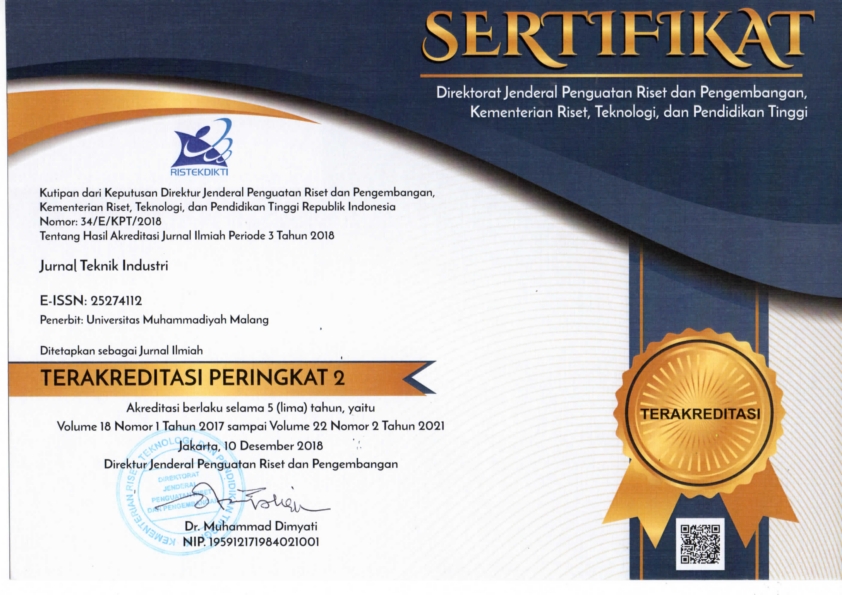Minimasi Defect Produk Dengan Konsep Six Sigma
DOI:
https://doi.org/10.22219/JTIUMM.Vol13.No1.43-50Keywords:
DMAIC, Pareto diagram, cause and effect diagram, potential failure mode effect and analysis (PFMEA), statistical process control (SPC)Abstract
Company can be competitive in industry with giving a product which pursuit with the specification and have no defect, in order to produce product which have good and uniform quality existed variance had to be minimized. Six Sigma was a total approach to solve problems and increase process through DMAIC phase (Define, Measure, Analyze, Improve, Control). Measure phase with Pareto diagram of defect cone polyester 30, it was found that percentage of cone defect polyester 30 were: lapping, swelled, stitch, pattern, wrinkles, and ribbon and in the measure phase, it was known that sigma value equal to 3,05. Analyze phase used cause and effect diagram to analyze causes of a problem in detail. Improve phase used potential failure mode effect and analysis (PFMEA). In control phase statistical process control (SPC) was used, attribut data np control chart. The result of research were reducing DPMO to 29,87% and increasing value of sigma to 3.8 after the application of Six Sigma.











